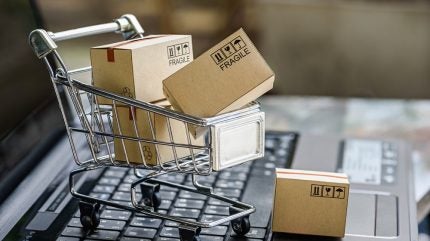
As eCommerce reshapes the retail landscape, direct-to-consumer (DTC) packaging has emerged as a powerful tool for brands to forge deeper connections with their audience.
In a marketplace where customer experience increasingly defines loyalty, DTC packaging is no longer simply a vessel for products—it’s a branded touchpoint, a storytelling medium, and a strategic differentiator.

Discover B2B Marketing That Performs
Combine business intelligence and editorial excellence to reach engaged professionals across 36 leading media platforms.
Modern consumers, especially millennials and Gen Z, expect more than just a transaction. They want emotional resonance, sustainability, and value reflected in every part of their purchase journey—including how it arrives on their doorstep.
As a result, the packaging used by DTC brands has transformed into a key component of brand identity and consumer engagement.
Designing for unboxing: where function meets emotion
Unboxing has become a ritual for online shoppers, often shared on social media platforms like Instagram and TikTok. The packaging moment is no longer an afterthought—it’s part of the product experience.
Thoughtfully designed DTC packaging adds perceived value, evokes excitement, and creates shareability, giving brands an organic marketing boost.

US Tariffs are shifting - will you react or anticipate?
Don’t let policy changes catch you off guard. Stay proactive with real-time data and expert analysis.
By GlobalDataSuccessful direct-to-consumer brands understand that packaging design must strike a balance between aesthetics and function. From custom-printed boxes to branded tissue paper, thank-you cards, and minimalist inserts, every detail matters.
Elements like embossed logos, sustainable inks, and colour-matched materials reflect the brand’s ethos and reinforce its visual identity.
Beyond visual appeal, packaging must also protect the product during shipping and be easy to open and dispose of. Smart design ensures durability without excess materials, supporting eco-conscious values while maintaining the integrity of the item inside.
For example, many DTC skincare and cosmetics companies are opting for recyclable and biodegradable materials, aligning their packaging with broader environmental commitments.
Sustainability and the shift towards eco-friendly packaging
Sustainable packaging is no longer optional—it’s expected. As consumers grow more aware of the environmental impact of their purchases, they’re choosing brands that align with their values.
According to research by NielsenIQ, over 73% of global consumers say they would change consumption habits to reduce environmental impact.
This shift is pushing DTC brands to adopt eco-friendly packaging solutions. From compostable mailers and plastic-free seals to reusable shipping containers, innovative approaches are reshaping how products are delivered.
Corrugated cardboard, soy-based inks, and minimal plastic use are fast becoming industry standards.
However, sustainability in packaging goes beyond materials. Efficient design that reduces volume and weight helps lower emissions during transit, a significant consideration for brands shipping globally.
Companies like Allbirds and Glossier have built sustainability into their DTC operations, leveraging packaging as a visible commitment to green values.
Transparency also matters. Labelling that clearly communicates recyclability or compostability helps customers dispose of packaging correctly, and brand stories printed inside the box or sleeve can educate users about sustainability practices. This level of communication enhances trust and positions the brand as a responsible player in the market.
Personalisation and the evolving customer-brand relationship
One of the greatest advantages of the DTC model is the ability to own the customer relationship end-to-end. Packaging plays a central role in this by creating a more personalised and memorable experience.
Personal touches—like hand-signed thank-you notes, tailored messages, or product recommendations based on past purchases—can increase customer satisfaction and retention.
When customers feel recognised and valued, they are more likely to become repeat buyers and brand advocates.
Technology also enables personalisation at scale. Data-driven printing and fulfilment systems allow DTC brands to customise packaging without incurring excessive costs. Subscription boxes, for example, often vary contents and messages based on the recipient’s profile or preferences, turning every delivery into a curated experience.
Emotional branding is another strategy employed through DTC packaging. Packaging that tells a story—whether about the maker, the ingredients, or the mission behind the brand—deepens engagement.
This narrative approach, paired with tactile quality and visual coherence, strengthens the overall customer-brand relationship and can lead to stronger word-of-mouth marketing.
The long-term impact of DTC packaging
The rise of direct-to-consumer packaging marks a larger trend in retail: the blending of product delivery with brand storytelling. It’s an area where design, logistics, and marketing intersect, and when executed well, it adds tangible value across the customer journey.
For emerging and established DTC brands alike, investing in thoughtful packaging design not only elevates the unboxing experience but also reinforces long-term brand loyalty.
As consumers continue to expect more from the brands they support, packaging will remain a critical differentiator—one that reflects purpose, creativity, and care.
By prioritising sustainability, personalisation, and intentional design, DTC packaging can move beyond practicality and become a meaningful part of how a brand communicates with the world.
In an increasingly crowded online marketplace, that level of connection is invaluable.





